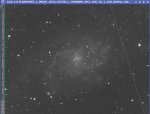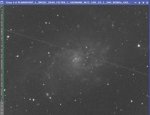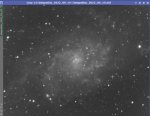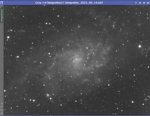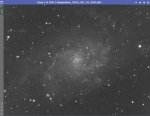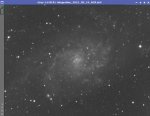Aldozan
Member
Hi, I just want to share my experience in removing satellite tracks from frames.
I had two subframes with strong tracks:
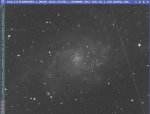
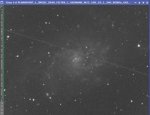
(already calibrated, CC, weighted, registered, drizzle and ln)
First Image Integration run applying Avereged Sigma Clipping (9 subframes) and default sigma values:
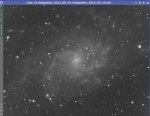 tracks are still well visible.
tracks are still well visible.
Best result obtained after tweaking sigma high to 1.5:
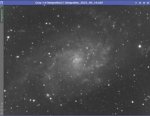 better, but still visible.
better, but still visible.
New approach, following this post: https://pixinsight.com/forum/index....zed-deviate-test-rejection.15698/#post-108259 and using Generalized Extreme Studentized Deviate with 0.77 ESD outliers and 0.79 ESD significance:
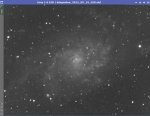 better, but tracks are still there and general quality of the image is deteriorated
better, but tracks are still there and general quality of the image is deteriorated
Last chance, using Robust Chauvenet Rejection algorithm with RCR limit 0.8, range low 0, range high .98:
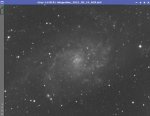 Finally tracks are out, but image has a lower SNR.
Finally tracks are out, but image has a lower SNR.
Conclusion: in this case at least, Yes you can remove tracks from your image, but you have to balance that with the lower SNR level of the integration. On a stack of 9 subframes my choice is to go with RCR, and when I run integration also with subframes from other session (46 images) I simply drop the two with the tracks.
This is my very, very little wisdom pill on satellite tracks removal. I would like to know other experience and learn from that.
I had two subframes with strong tracks:


(already calibrated, CC, weighted, registered, drizzle and ln)
First Image Integration run applying Avereged Sigma Clipping (9 subframes) and default sigma values:

Best result obtained after tweaking sigma high to 1.5:

New approach, following this post: https://pixinsight.com/forum/index....zed-deviate-test-rejection.15698/#post-108259 and using Generalized Extreme Studentized Deviate with 0.77 ESD outliers and 0.79 ESD significance:

Last chance, using Robust Chauvenet Rejection algorithm with RCR limit 0.8, range low 0, range high .98:

Conclusion: in this case at least, Yes you can remove tracks from your image, but you have to balance that with the lower SNR level of the integration. On a stack of 9 subframes my choice is to go with RCR, and when I run integration also with subframes from other session (46 images) I simply drop the two with the tracks.
This is my very, very little wisdom pill on satellite tracks removal. I would like to know other experience and learn from that.

